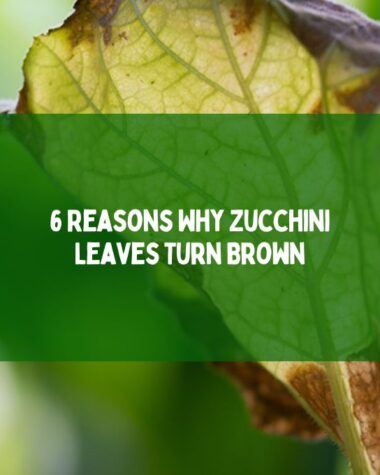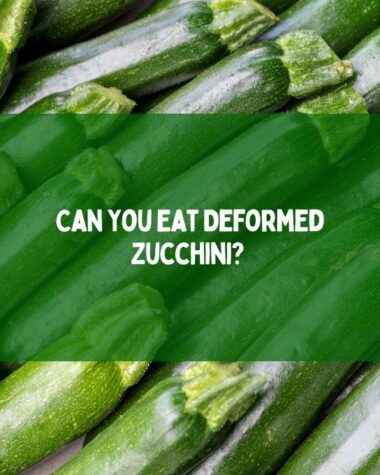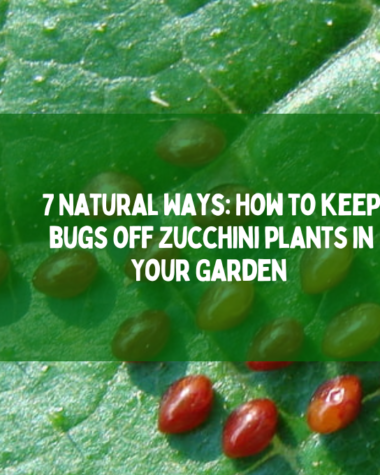Zucchini plants are a popular vegetable among home gardeners due to their relatively easy growing process and delicious yield. However, as with any plant, zucchini plants require proper maintenance and care to thrive.
One important aspect of zucchini plant care is pruning. Pruning zucchini plants helps to improve their overall health. It also increases their yield and keeps them looking neat.
Should I prune zucchini plants?
Yes, you can. In this article, we’ll cover everything you need to know about how to prune a zucchini plant.
Why Prune Zucchini Plants?
Pruning a zucchini plant helps to direct the plant’s energy toward producing fruit. Zucchini plants are known to produce a lot of leaves and vines. If left unchecked, these can overtake your garden bed and reduce your yield.
By removing some of the leaves and stems, you’ll also improve the air circulation around the plant, reducing the likelihood of diseases and pests.
Pruning is an essential aspect of zucchini plant care that can significantly impact the overall health and productivity of the plant.
Zucchini plants are known for their rapid growth and high yield, but without proper maintenance, they can become unruly and unproductive. In this part, we will explore why pruning is essential to a zucchini plant and how it can benefit your garden.
Increases yield
One of the primary reasons why pruning is important to a zucchini plant is that it increases the plant’s yield. When zucchini plants grow, they develop numerous branches and leaves, which can compete for the plant’s energy and nutrients.
Pruning the plant helps to direct the plant’s resources towards fruit production, resulting in larger and more abundant harvests.
Improves plant health
Pruning zucchini plants can also help to improve the plant’s overall health. When the plant is crowded with too many leaves and branches, trim zucchini plant leaves, It can create a humid environment that promotes fungal and bacterial diseases.
By removing some of the leaves and branches, you can improve air circulation, reducing the likelihood of disease and pest infestation.
Related Reading:
- When to Transplant Zucchini Seedlings? Let’s find out
- What is Zucchini Summer Squash and How to Plant Zucchini from Seeds?
Promotes better fruit quality
Pruning zucchini plants can also promote better fruit quality. When the plant is pruned, it produces larger and more flavorful fruits. This is because the plant’s energy is directed toward the fruit rather than producing unnecessary foliage.
Additionally, pruning can help to reduce the incidence of misshapen or stunted fruit by ensuring that the plant has enough energy and nutrients to produce healthy fruits.
Prevents overcrowding
Pruning zucchini plants can also help to prevent overcrowding in the garden. Zucchini plants are known for their rapid growth and can easily take over a garden bed if left unchecked.
Can you trim zucchini plants?
Yes, it’s important. Pruning helps to control the plant’s growth and size, preventing it from overshadowing other plants in the garden and maximizing the available space.
Easy maintenance
Finally, pruning zucchini plants is an easy way to maintain the plant and keep it looking tidy. By regular pruning, you can control the plant’s size and shape, making it easier to manage and harvest. Additionally, pruning makes it easier to inspect the plant for any signs of disease or pest infestation.
When to Prune Zucchini Plants?
Zucchini plants should be pruned when they are still young and before they start to produce fruit. This is usually around 3-4 weeks after planting. If you wait too long to prune, you risk damaging the plant and reducing your yield.
How to Prune Zucchini Plants?
Follow the following steps for how to prune a zucchini plant. if you want to prune your zucchini plants:
- Identify the main stem of the plant. This is the thick stem that runs up the center of the plant.
- Look for the first set of leaves that have five leaves each. These leaves are called the “true leaves.” From this point on, any leaves that grow out from the main stem will have only three leaves each.
- Using a sharp pair of garden shears or scissors, cut off any leaves that grow from the main stem below the true leaves. These leaves are not necessary for the plant’s growth and can be safely removed.
- As the plant grows, you’ll notice that it starts to develop secondary branches that grow out from the main stem. These branches will also produce leaves and eventually flowers and fruit.
- To prevent the plant from becoming too bushy and to promote air circulation, you can remove some of the secondary branches. Look for branches that are growing in a direction that’s crowding out other branches or that are growing too close to the ground.
- Be sure not to remove too many branches or leaves, as this can stunt the plant’s growth and reduce your yield.
Related Reading:
- 5 Times You Should Prune Tomato Plants For Huge Harvests
- Cucumber Plant Care Tips: How to Keep Your Plant Healthy and Happy
Tips for Pruning Zucchini Plants
The following tips are helpful if want to prune your zucchini plant.
- Use clean, sharp shears or scissors to prevent damaging the plant.
- Avoid pruning in wet weather as this can increase the risk of disease.
- Don’t remove more than one-third of the plant’s foliage at any one time.
- Regularly check your zucchini plants for signs of disease or pests and remove any affected leaves or branches immediately.
- Consider using organic fertilizer or compost to help your zucchini plants grow and produce a higher yield.
Conclusion
In conclusion, pruning is an essential aspect of zucchini plant care that can significantly impact the plant’s yield, health, and overall productivity. By regularly pruning your zucchini plants, you can increase your harvest. You can also improve fruit quality, prevent overcrowding, and ensure easy maintenance.







